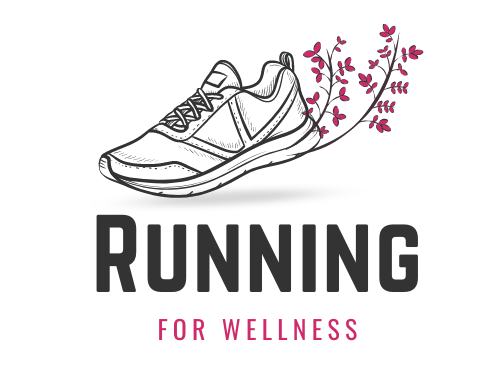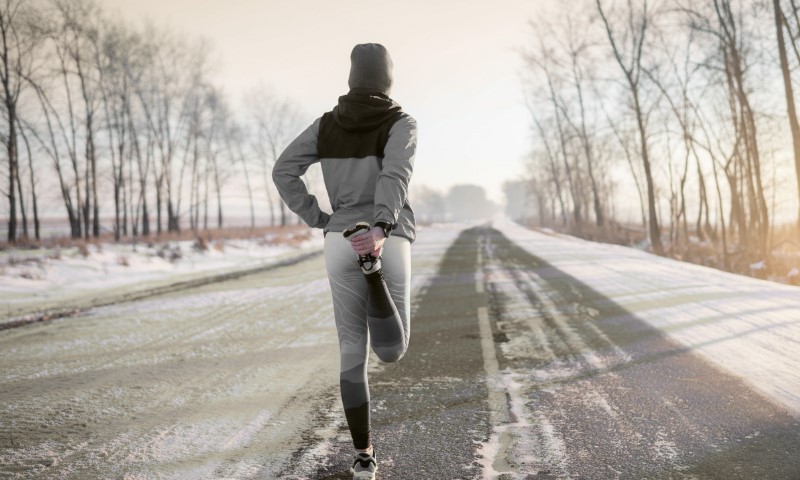Post-run stretching is more than just a cool-down ritual, it’s a vital part of keeping the body strong and functional. Just a stretch or two can lead you a long way.
Just a few minutes of focused movement after a long run can help loosen tight muscles, ease the transition into recovery, and reduce the chance of injury later on.
Let us talk about the best stretches you should do after a long run in greater detail.
Table of Contents
ToggleEssential Post-Run Stretches
After finishing a long run, muscles are warm and more responsive to mobility work.
Stretching immediately after allows the body to cool down gradually while restoring balance, length, and elasticity to the muscles that were just taxed.
Stretching different areas of the body helps address tension and fully reduce soreness.
Lower Leg and Calves

Tight calves are a common post-run complaint, especially after high mileage or hill workouts. Loosening the lower leg helps prevent issues like Achilles tendon strain and plantar fasciitis.
Standing Calf Stretch
Face a wall, place your hands at shoulder height, and step one foot back. Press the back heel into the ground while keeping the leg straight. Lean slightly forward to feel the stretch along the calf.
Flexed Calf Walkout
Start in a standing position. Bend at the hips, place your hands on the ground, and walk them forward into a plank. Keep your heels pressing toward the floor to activate both calf muscles throughout the movement.
Helps with:
- Muscle tightness
- Plantar fascia tension
- Achilles strain prevention
Quads and Hamstrings

Powerful strides come with consequences, especially for the thigh muscles. Stretching the front and back of the legs can reduce pressure on the knees and promote better alignment.
Thigh/Quadriceps Stretch
Balance on one leg, bend the opposite knee, and pull the heel toward the glutes. Keep the knees aligned and avoid arching the back. It isolates the quadriceps while engaging the hip flexors.
Glute and Lower Hamstring Stretch
Lie on your back, cross one ankle over the opposite knee, and gently pull the bottom leg toward your chest. This targets the outer glutes and lower hamstring area.
Seated Hamstring Stretch
Sit with both legs extended forward. Keep your back flat and hinge at the hips to reach toward the toes. Avoid rounding the spine or bouncing into the stretch.
Helps with:
- Improved stride length
- Lower back relief
- Reduced hamstring soreness
- Hips and Glutes
These power centers take a beating on long runs. Addressing tight hips and glutes can alleviate back pain and promote better balance during movement.
Outer Hip (Piriformis) Stretch
View this post on Instagram
A post shared by Dr. Lindsay Grobman Lombardo PT, DPT, RYT, HHC (@breathe_edenptyogandwellness)
Sit or lie on your back. Cross one ankle over the opposite thigh and pull the bottom leg in toward your chest. A controlled pull activates the piriformis and outer glute muscles.
Hip Flexor Stretch
Start in a low lunge with one knee on the floor. Tuck the pelvis slightly and lean into the front leg without arching the back. A gentle forward shift opens up the front of the hip.
Helps with:
- Posture alignment
- Releasing hip tightness
- Easing lower back pain
Inner Thigh and Groin
Inner thighs play a key role in stabilizing the hips and knees during running. Stretching this area promotes more efficient movement and reduces the risk of strain.
Inner Thigh (Adductor) Stretch
Sit on the ground, press the soles of the feet together, and allow the knees to fall open. Hold the feet and gently press the knees toward the floor, using the elbows if comfortable.
Helps with:
- Stabilizing knee tracking
- Reducing groin tension
- Supporting lateral movement control
Lower Back and Chest

Post-run posture often causes rounding through the shoulders and stiffness in the spine. A twist stretch restores mobility and helps reset breathing patterns.
Lower Back and Chest Twist Stretch
Lie on your back with arms stretched out in a T-shape. Bend one knee, bring it across the body, and allow it to fall toward the floor. Keep the opposite shoulder grounded and look toward the extended arm.
Helps with:
- Aligning the spine
- Opening the chest
- Reducing upper and lower back stiffness after a run
Key Benefits of Post-Run Stretching
Stretching after a long run is not just a nice addition, it plays a direct role in physical recovery, injury prevention, and mental reset.
Each benefit contributes to a more effective training routine and a healthier body over time.
1. Restoring Flexibility and Movement Quality
Muscles put under repeated stress during a run often end up shortened and tight.
That reduced elasticity limits the range of motion, which can affect running form and overall comfort. Gentle, targeted stretching restores muscle length and promotes fluid movement.
Improved flexibility helps runners maintain a more efficient stride, reducing energy waste and strain on surrounding joints.
- Encourages more natural stride mechanics
- Reduces compensatory movement patterns
- Helps runners maintain better posture during runs
2. Boosting Circulation and Speeding Up Recovery
Post-run stretching stimulates blood flow to muscles that just worked hard.
That fresh circulation delivers oxygen and nutrients while clearing out lactic acid and other waste products.
The result is faster muscle repair and less stiffness the next day.
- Enhances oxygen delivery to fatigued tissues
- Assists in waste removal
- Promotes quicker recovery between training sessions
3. Activating the Parasympathetic Nervous System
Running raises the heart rate and keeps the body in an activated, high-alert state. Stretching after exercise flips the switch by activating the parasympathetic nervous system, which is responsible for rest, relaxation, and digestion.
- Supports a smooth transition into recovery mode
- Reduces cortisol and mental stress
- Prepares the body for rest and sleep
4. Detecting Early Signs of Injury or Overuse
Stretching offers a quiet moment to scan the body. Tension in one area, slight discomfort, or reduced range on one side can reveal muscular imbalances or early signs of overuse.
These small indicators often go unnoticed during the run but show up clearly during the cooldown.
- Helps identify tight spots or pain signals
- Allows early intervention and training adjustments
- Encourages a more mindful relationship with the body
Tips for Effective Stretching

Stretching works best when approached with patience and body awareness. There’s no prize for pushing past a limit—comfort is key. Runner’s World recommends easing into each position gradually and avoiding any bounce or forceful movement.
Hold each stretch between 10 and 60 seconds, depending on your experience level and how tight the muscles feel. Shorter holds are fine for beginners, while longer durations help deeper muscle relaxation. Consistency matters more than duration, so build it into your routine.
Breathing should remain slow and controlled. Inhale through the nose and exhale through pursed lips to support muscle release and calm the nervous system. Over time, regular stretching leads to tangible gains in mobility and reduces the risk of repetitive strain.
Final Thoughts
Skipping the stretch only invites soreness and potential setbacks. A short commitment after each run can protect muscles, enhance mobility, and give your brain a moment to slow down.
Tune in to how the body feels and adjust as needed. Recovery starts with care, and stretching is one of the simplest tools available.
Related Posts:
- Half Marathon Training Plan for Beginners - Simple…
- Top 400 Hilarious Gym Quotes to Keep You Motivated
- 25 Simple Running Motivation Tips To Get You Moving
- How Long Does It Take to Train for a Half Marathon?
- How Far Is a Half Marathon? Everything You Need to Know
- Should You Run on an Empty Stomach? Pros and Cons Explained







